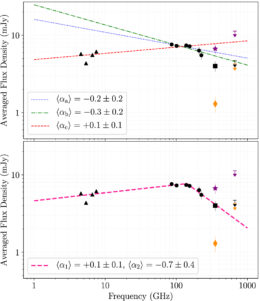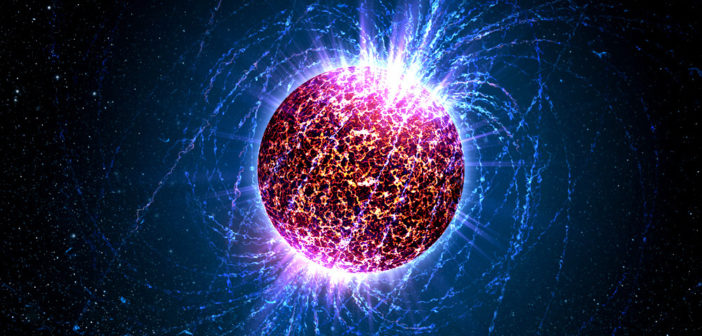New observations have captured pulses of radiation from a magnetic stellar remnant called a magnetar. What do these observations tell us about how magnetars and other neutron stars generate their beams of emission?
Rare Stellar Remnants

The Vela pulsar — seen emitting jets of fast-moving particles in this image — was the first pulsar to be detected at submillimeter wavelengths. Now, the first neutron star to pulsate in this wavelength range has been discovered. [NASA/CXC/Univ of Toronto/M. Durant et al.]
It’s not yet clear how pulsars generate their beams of radio emission. One way to probe the generation mechanism is by studying the emission across a wide range of wavelengths, since some models predict that the emission should increase at a “turn-up” point somewhere between radio and infrared wavelengths. Previous observations have found tantalizing hints of this feature, but it has never been detected definitively. Can a new search at submillimeter wavelengths find the elusive turn-up point?

Detection of XTE J1810−197 on 27 February 2020 at a wavelength of 0.85 mm. The panels show the target during a pulse (left) and not during a pulse (right) as well as the difference between the two states (bottom). Click to enlarge. [Adapted from Torne et al. 2022]
A Submillimeter Signal
A team of astronomers led by Pablo Torne (Institute of Millimeter Radio Astronomy, Spain; East Asian Observatory; and Max Planck Institute for Radio Astronomy, Germany) searched for signs of the turn-up point in observations of XTE J1810-197, one of only six neutron stars categorized as both a pulsar and a magnetar.
Torne and collaborators used telescopes across the globe to observe XTE J1810-197 over the course of 15 months. They detected a beam of emission swinging by for a few hundred milliseconds once per rotation period (5.54 seconds) at wavelengths ranging from 0.85 millimeters to 5.0 centimeters, marking the first time pulses from a neutron star have been detected at submillimeter wavelengths. However, they didn’t detect the pulses at 0.45 mm — the shortest wavelength searched in this study. What do these observations imply about the location of the turn-up point?
Where Will the Turn-up Turn Up?

Power-law (top) and broken power-law (bottom) spectral fits for XTE J1810−197. The downward pointing arrows indicate upper limits. [Torne et al. 2022]
However, searching these wavelength ranges may not be as simple as pointing the right kind of telescope at the target; magnetars are complicated, ever-changing objects that exhibit extremely energetic outbursts at short wavelengths and day-to-day variability across all wavelengths. This high level of variability can make determining the true shape of a neutron star’s spectrum challenging, since it might not be possible to compare measurements made at different times. (For example, astronomers have observed XTE J1810-197 in the infrared once before, but those observations were made when the magnetar was undergoing an explosive outburst.) However, with a little planning, simultaneous observations from radio to infrared could help us track down the turn-up point.
Citation
“Submillimeter Pulsations from the Magnetar XTE J1810-197,” Pablo Torne et al 2022 ApJL 925 L17. doi:10.3847/2041-8213/ac4caa

